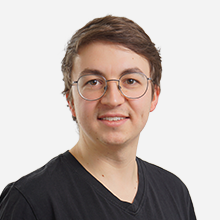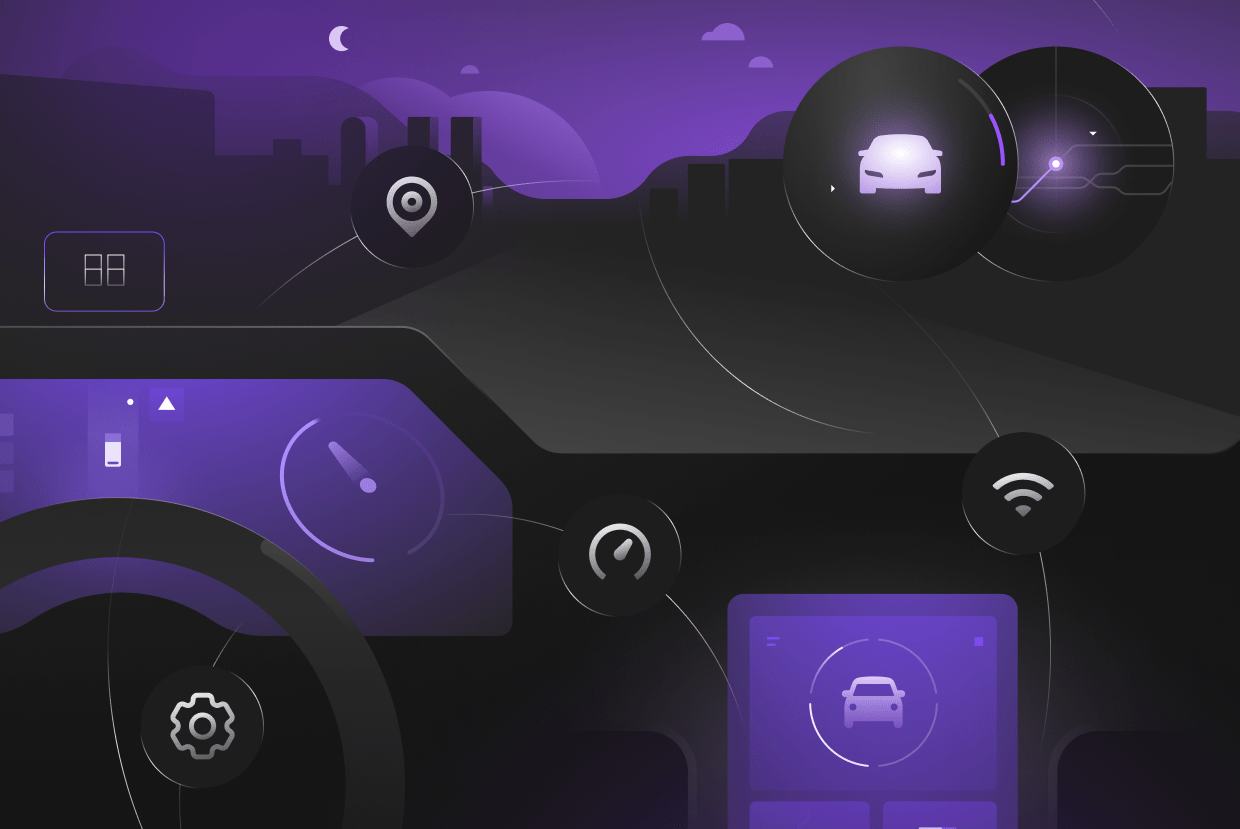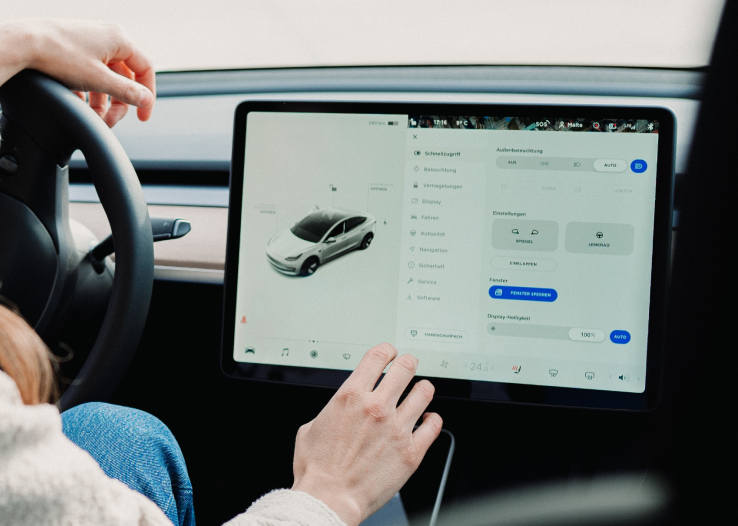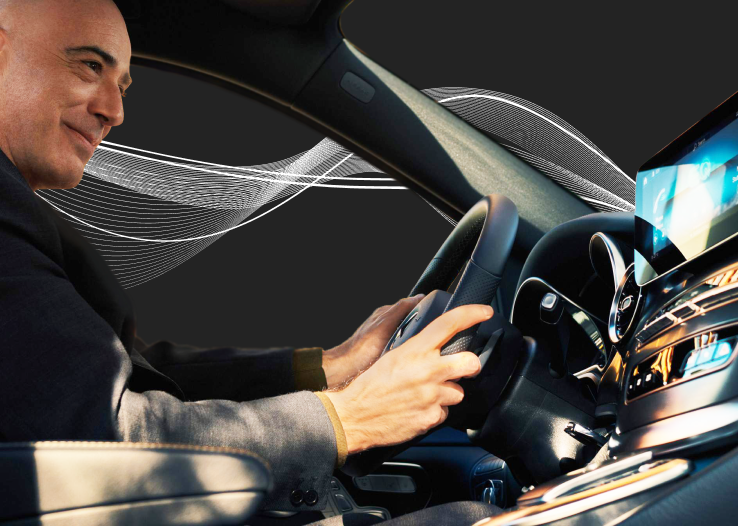How can automakers create more value for their customers and make the best use of the latest technologies? How can they improve their product experience to stay relevant in an ever-evolving market? In the automotive industry, success hinges on prototyping and testing.
Automotive prototyping and testing in critical in the automotive industry. Here we'll share share our proven testing methods that have helped our clients streamline their automotive product development pipelines and launch winning mobility experiences.
Why automotive prototyping matters
Automotive prototyping is the process of creating models (both physical and digital) of new vehicles and components to refine designs before production begins. Doing so allows manufacturers to test safety, functionality, design and aesthetics before committing to mass production, saving time and money in the meantime.
From BMW to Volkswagen to SAIC, global automakers are investing billions in improving the in-car experience through HMI technologies, including voice commands, touchscreens, interior-facing cameras, head-up displays and multifunctional controllers. We know that the automotive market leaders of tomorrow will be those that win the technology arms race.
But how do you know what technologies to bet in? How do you introduce novel driving experiences without alienating your core customers? This is why research, prototyping and testing are essential for automotive manufacturers. The solution isn't as simple as “let’s put in a bunch of large screens throughout the vehicle.” Instead, it requires deep user and market understanding.
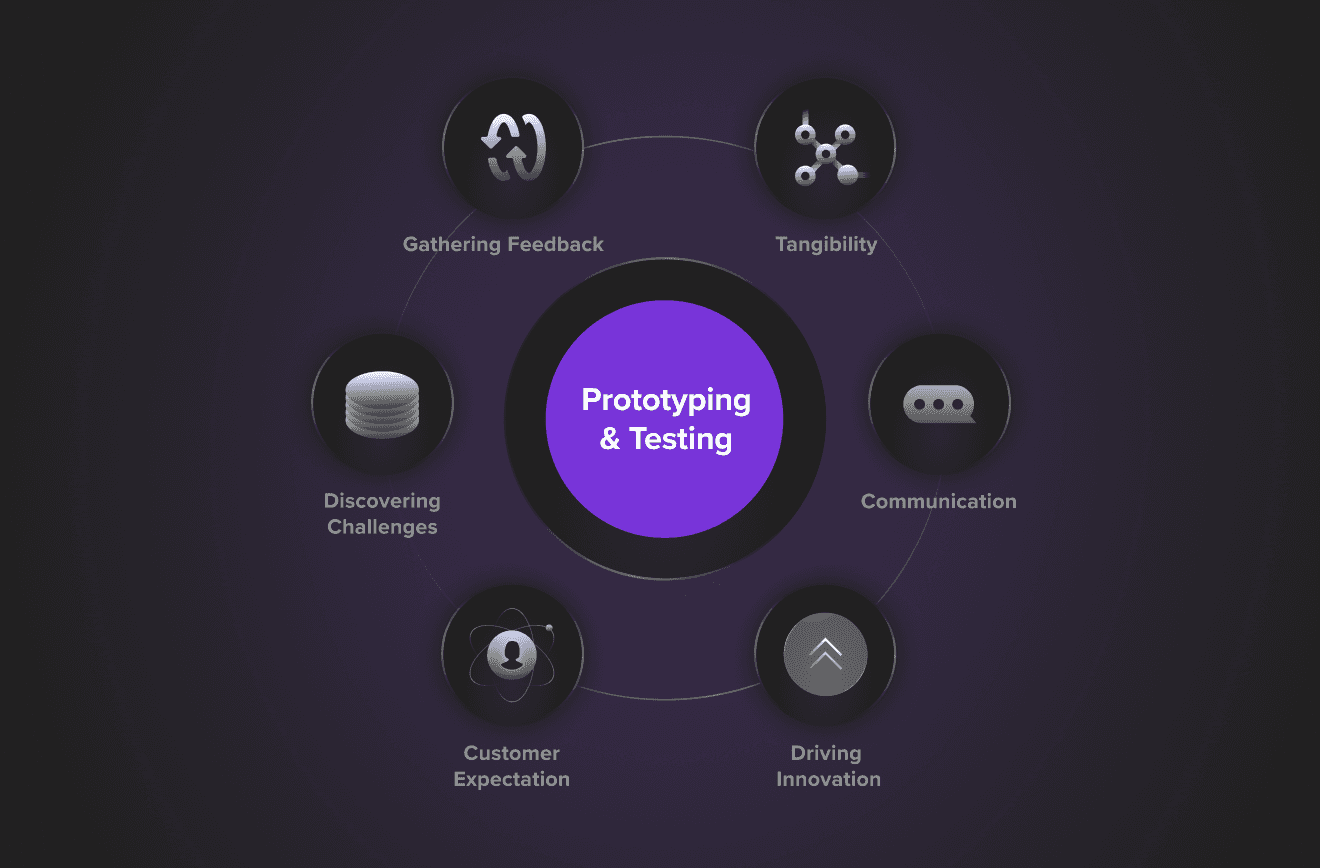
Benefits of automotive prototyping
Prototyping and testing comes with a range of benefits, including:
- Reduce costs: If you get your product right pre-production, you're not spending money to start again. Prototyping allows designers to validate their design concepts, identify flaws or limitations and make necessary adjustments before moving forward with mass production — avoiding expensive rework and ensuring the final product meets customer expectations and regulatory requirements
- Increase customer satisfaction: Prototyping and testing helps automotive companies understand customer preferences and expectations. By incorporating customer feedback early in the design process, companies create products that meet or exceed customer expectations
- Acquire more informative and reliable data: By shifting towards more accurate and detailed prototypes, it becomes possible to unlock more reliable resulting data for further refinement. This leads to a more iterative and efficient design process, where feedback from testing can be used to improve and refine the product
- Facilitates collaboration and communication: Prototyping brings together different departments and stakeholders, including designers, engineers and customers. This collaborative process helps ensure that everyone's on the same page and working towards the same goals, giving you a better product that meets the needs of all parties involved
- Faster time-to-market: Rapid prototyping speeds up the development process. Selecting appropriate tools further optimizes the prototyping process, reducing development time and getting your product to market faster
In short, prototyping is a crucial tool for the automotive industry to remain agile and responsive to disruption, while also driving innovation and ensuring that new technologies are fully tested and optimized before they reach consumers.
Automotive prototyping services
Safety, ergonomics, multi-sensory experiences and strict regulations are just a few of the challenges companies in the automotive face. As the industry continues to evolve, UX design should be adaptable and scalable to accommodate emerging trends and technological advancements.
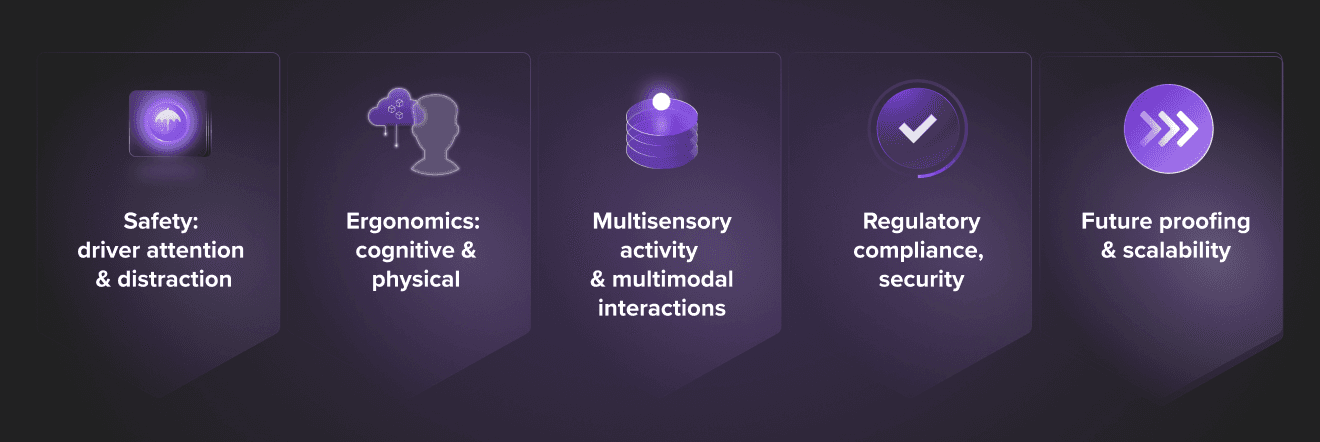
The goal is to provide a consistent and immersive user experience, while meeting all necessary requirements. As such it’s crucial to balance the complexities of prototyping and testing in the automotive industry, including:
- Safety: Users are challenged by many senses (visual, audition, touch) that require attention, therefore we need to test it
- Ergonomics: Users spend a considerable amount of time in cars. Is the product comfortable and simple enough especially for long commutes?
- Multi-sensory: Users want touchscreens, voice assistants and gesture controls. Are your technologies easy and intuitive to use?
- Highly regulated ecosystem: The automotive industry is subject to strict regulations. UX designs should comply with these regulations
- The rapidly evolving playing field: The industry is constantly changing. UX designs should be adaptable and scalable to accommodate emerging trends and technological advancements
- Localization: According to our new research, localization is now a strategic imperative. What works for Chinese users won't work for German. Are your designs and UX adapted to local realities?
Functions of automotive prototyping

At Star, we believe in an iterative approach to prototyping and testing. We create a prototype, evaluate it and make necessary changes until we reach our goal. Automotive prototypes fall into four distinct areas: service, experience, physical and virtual. Service prototypes help us understand user needs and turn vision into reality, while experience prototypes test behavior, usability, and technical limitations.
Physical prototypes explore functions and user reactions to physical products and offer high-fidelity experiences, including haptics, despite their potential cost. On the other hand, virtual prototypes are fast and cost-effective, opening up a wide range of applications and scenarios.
As there is no one-size-fits-all approach, start by understanding your users and move forward on your journey accordingly.
Automotive prototyping is critical for delivering high-quality, safe products that exceed customer expectations, in turn reducing development costs and minimizing time-to-market. That’s why we’re working with the world’s leading automotive manufacturers to harness it.
On-demand masterclass
Watch our on-demand automotive prototyping masterclass below to explore:
Delve into the essentials to understand prototyping's vital role in producing safe, reliable and effective products while reducing costs.
Or learn how you can start leveraging automotive prototyping for your brand.
